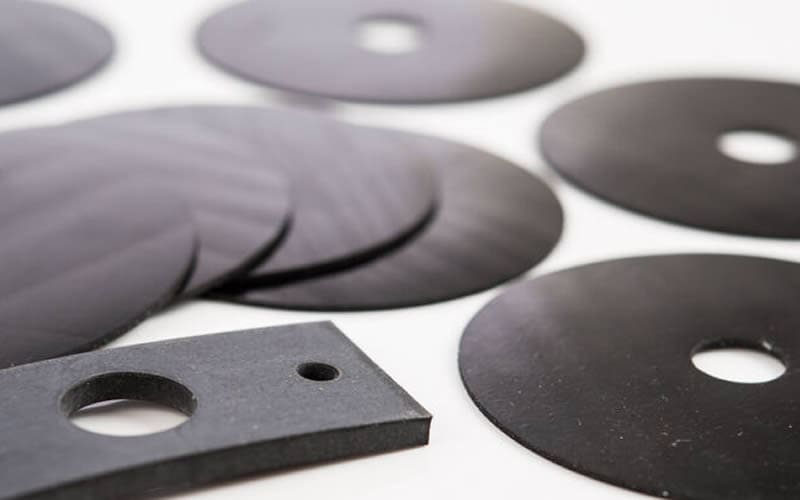Summary. Stephens Gaskets, a leading supplier of precision machined components, offers a range of materials including neoprene. Neoprene, synthesised through the polymerisation of chloroprene and vulcanisation, possesses excellent bonding ability, high-temperature resistance, and chemical resistance, making it ideal for diverse industrial applications such as safety equipment, gaskets, and seals.
Here at Stephens Gaskets, we are proud to be one of the country’s leading suppliers of shims, washers, and gaskets. We have spent decades in the industry, and in this time, we have developed a highly in-depth knowledge and understanding of the materials and resources we use. We aim to be able to provide solutions for all sorts of requirements and applications, and we can achieve this goal by ensuring we can offer our customers a wide range of materials to choose from; including neoprene. But what are the properties of neoprene that can benefit those looking for precision machined components made from the material?
Related: Ferrous and Non-Ferrous Metals | What’s The Difference?
How is Neoprene Rubber Made?
Neoprene is a type of rubber that has been artificially synthesized to make such material. It is made through the polymerisation of chloroprene, which is why neoprene is often referred to as polychloroprene. During its later stages of production, the material undergoes its next process which is called vulcanisation. This process helps to create some of the structural properties such as its strength and elasticity. During this stage of neoprene production, sulfur cross-links are formed between the material’s individual layers. By adjusting different parameters during this process, you can determine the number of sulfur links.
Neoprene Properties
Neoprene rubber is used in many applications for shims and washers because it has a number of useful and important properties such as:
- Good ability to bond with other materials
- High-temperature resistance
- Good chemical resistance
Bonding
Neoprene can easily be bonded to other materials. The material is often used to manufacture safety equipment, such as shoes, pants, and protective coats. Apart from its resistance to chemicals and hot and cold temperatures, the ability to bond to other materials is one of the neoprene’s most important properties. It can be manipulated using a bonding agent to join it to many different materials, for example, cotton, brass, copper, and stainless steel.
Heat & Cold Resistant
Natural rubber will usually start to decompose and physically degrades when exposed to high temperatures. However, neoprene however, does not, and can in fact withstand temperatures as high as 300 °F. Additionally, it can withstand short bursts of extreme temperatures too, catching fire incredibly well. Instead of melting and becoming stretchy like a normal rubber, neoprene will harden when exposed to high temperatures. Alongside being heat resistant, neoprene rubber does not stiffen as easily as natural rubber. It can be exposed to temperatures as low as -75 °F. As a result, neoprene has a fantastic temperature range in which it is usable in and therefore is favoured for many industrial environments.
Chemical Resistance
Another one of neoprene’s properties is its chemical resistance. As it is a polymeric chain with further sulfur bonding, its reactivity is reduced, and therefore it is resistant to processes such as oxidation – meaning it has an excellent lifespan. Additionally, it is resistant to petroleum-based solvents such as oil and grease, which is why the petroleum industry usually uses neoprene gaskets and seals.
Contact Us Today
For more information about neoprene properties, or if you would like to find out more about neoprene washers or gaskets, then please contact us today. Visit our website for more information or call 0121 544 5808 to speak to a member of our team.
Found this blog helpful? Then you may wish to read our previous blog on Stainless Spring Steel Strip or What is Flexoid Gasket Paper?

